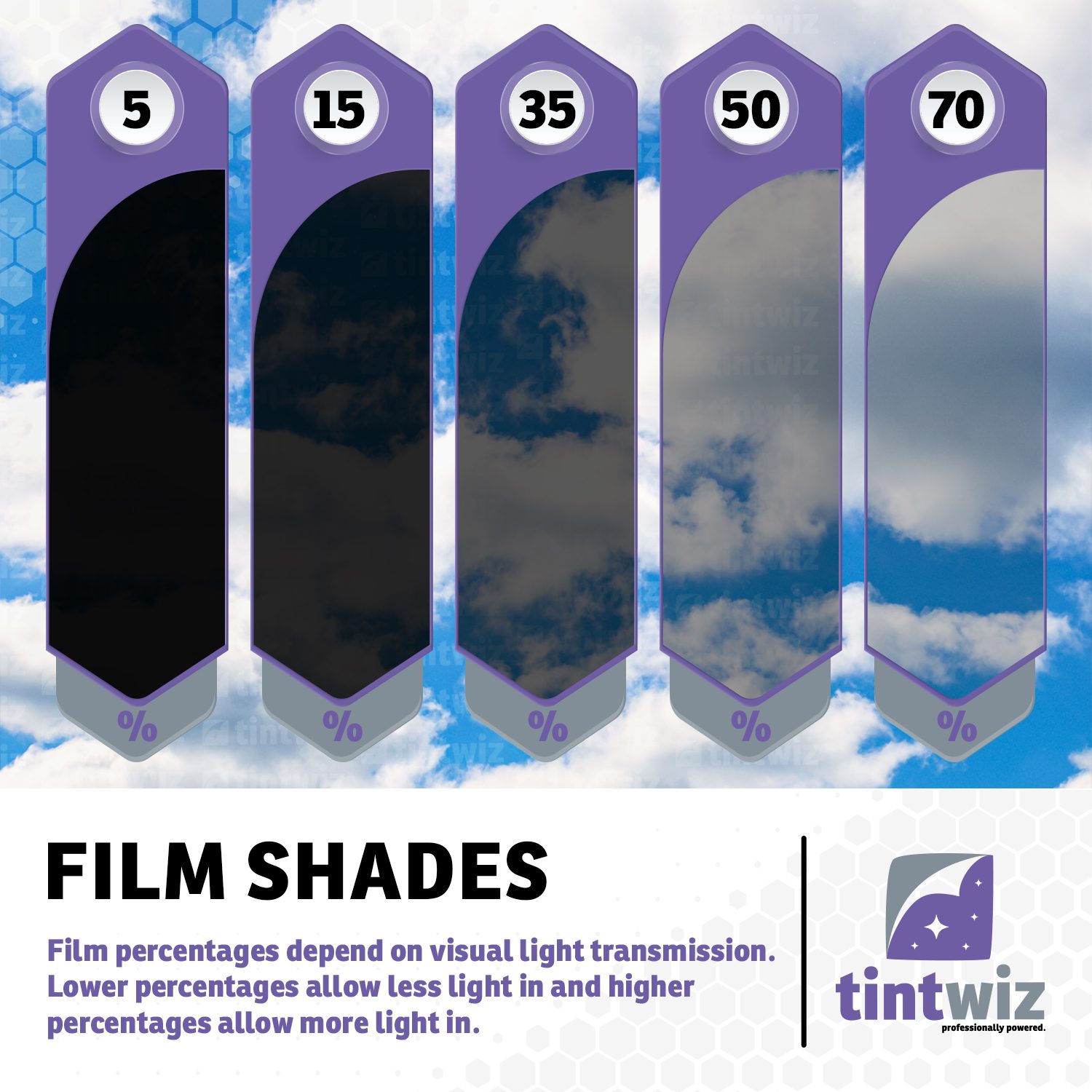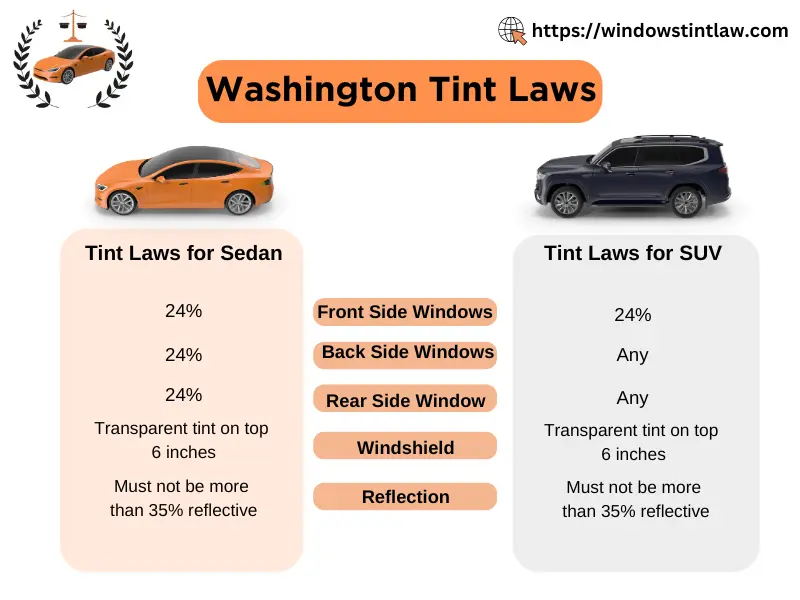As an Amazon Associate, I earn from qualifying purchases
Understanding window tinting laws in Washington is crucial for vehicle owners. These laws ensure safety and compliance on the road.
Window tinting enhances privacy and reduces glare. But each state has its own rules. Washington has specific regulations that you must follow. These rules help maintain road safety and ensure visibility. Knowing these laws prevents fines and keeps your vehicle legal.
This blog will guide you through the essential window tinting laws in Washington. You’ll learn about the allowed tint levels, restrictions, and important details. Stay informed to enjoy the benefits of window tinting while staying compliant with state regulations.

Credit: tintwiz.com
Legal Tint Percentages
Understanding the legal tint percentages for your vehicle windows in Washington is crucial. Different windows have different regulations. Knowing these can help you avoid fines.
Front Side Windows
The law in Washington states that front-side windows must let in more than 24% of light. This ensures the driver’s view is clear. It’s important for your safety and for others on the road.
Back Side Windows
For backside windows, the law is more lenient. You can have any darkness of tint. This allows for better privacy for passengers and their belongings.
Rear Windows
Rear windows in Washington also have no tint darkness restriction. You can choose any tint level. This gives flexibility for those needing more privacy or sun protection.
Reflection And Tint Colors
Window tinting laws in Washington are strict. They ensure safe driving and clear visibility. These laws cover various aspects, including reflection and tint colors. Understanding these can help you stay compliant and avoid fines.
Allowed Reflection Levels
Washington law regulates how much light a window tint can reflect. For sedans, the front side windows must not reflect more than 35% of light. This helps reduce glare and enhances visibility. The rear side windows also follow the same reflection limit.
SUVs and vans have similar rules. The front side windows can reflect up to 35% of light. Rear side windows and the back window can have higher reflection levels. But, they should still ensure clear visibility for drivers.
Permissible Tint Colors
Washington law restricts certain colors for window tints. Red, amber, and yellow tints are not allowed. These colors can distract other drivers and reduce visibility. The law aims to ensure safety on the road.
Other colors are permitted. But, they should not interfere with visibility. Black, gray, and charcoal tints are popular choices. They offer privacy and block harmful UV rays without compromising safety.
Medical Exemptions
Washington state has window tinting laws to ensure driver safety. However, some people with medical conditions need special exemptions. These exemptions allow them to have darker tints than usual.
Qualifying Conditions
To qualify for a medical exemption, you must have a medical condition. Some conditions make you sensitive to sunlight. Examples include lupus, albinism, and xeroderma pigmentosum. An eye condition like photophobia may also qualify.
Required Documentation
You need proper documentation to get a medical exemption. A licensed physician must provide a signed statement. This statement should explain your condition. It must also state why you need darker window tints.
Submit this documentation to the Washington State Department of Licensing. They will review your case. If approved, you can use darker window tints legally.

Credit: windowstintlaw.com
Penalties For Non-compliance
Window tinting laws in Washington are strict. Violating these laws can lead to several penalties. Understanding these penalties can help you stay compliant and avoid fines.
Fines And Charges
Fines and charges for non-compliance with window tinting laws can be costly. Here’s a breakdown of the potential fines:
| Violation Type | Fine Amount |
|---|---|
| First Offense | $124 |
| Second Offense | $250 |
| Subsequent Offenses | $500 |
Repeated violations can lead to higher fines. It’s important to correct any issues promptly to avoid these charges.
Correction Requirements
In addition to fines, there are correction requirements. If your window tint does not comply with the law, you will need to remove or replace it. Here are the steps:
- Receive a citation from law enforcement.
- Remove or replace the non-compliant tint.
- Provide proof of correction to the authorities.
Failure to correct the tint can lead to further penalties. These include higher fines and even potential legal action. Always ensure your window tint meets the legal requirements.
Installation Standards
Understanding the installation standards for window tinting in Washington is essential. Following these standards ensures compliance with state laws and guarantees a quality installation. Let’s explore the key aspects of these standards.
Certified Installers
In Washington, using certified installers is crucial. Certified professionals have undergone specific training. This training ensures they understand the regulations and proper techniques.
Benefits of certified installers include:
- Proper knowledge of state regulations
- Expertise in handling materials
- Minimized risk of installation errors
Quality Of Materials
The quality of materials used in window tinting affects both performance and legality. High-quality materials ensure durability and compliance with state laws.
Key factors to consider:
- UV protection level
- Heat rejection capabilities
- Durability and longevity
Choosing reputable brands ensures adherence to Washington’s standards. Also, high-quality materials often come with warranties, providing peace of mind.
| Material Type | Benefits |
|---|---|
| Dyed Films | Affordable, good glare reduction |
| Metalized Films | Durable, excellent heat rejection |
| Ceramic Films | Superior clarity, high UV protection |
Maintaining Legal Tint
To stay within the window tinting laws in Washington, you must maintain your tint properly. Regular upkeep ensures your tint remains within legal limits. This helps you avoid fines and other penalties.
Regular Inspections
Perform regular inspections on your tinted windows. Ensure they meet the state’s requirements. Use a light meter to check the Visible Light Transmission (VLT) level. It should comply with Washington’s legal standards.
You can find detailed VLT requirements in the table below:
| Window | Legal VLT |
|---|---|
| Front Side Windows | 24% or more |
| Back Side Windows | 24% or more |
| Rear Window | 24% or more |
| Windshield | Top 6 inches |
Keep a record of your inspection dates. This can be useful if you need to show compliance.
Dealing With Damage
Address any damage to your window tint promptly. Damaged tint can reduce your car’s visibility and violate tint laws. Here are some steps to manage tint damage:
- Inspect the damage: Identify the extent of the damage.
- Replace the tint: Use professional services for a seamless fix.
- Check the VLT level: Ensure the new tint meets legal requirements.
Maintaining your tint helps you avoid legal troubles and keeps your vehicle looking sharp. Regular checks and timely repairs are key to staying compliant.

Credit: www.cartintlaw.com
Frequently Asked Questions
What Are The Window Tinting Laws In Washington?
In Washington, front-side windows must allow over 24% light in. Rear windows can be darker. Windshield tint is limited to the top 6 inches.
Are There Medical Exemptions For Window Tinting In Washington?
Yes, Washington allows medical exemptions. You need a doctor’s prescription. The prescription should state that you require darker window tinting for health reasons.
What Is The Penalty For Illegal Window Tinting In Washington?
If caught with illegal tint, you might face fines. The fine can vary, but generally starts around $124. You may also need to remove the tint.
Can I Tint My Windshield In Washington?
In Washington, only the top 6 inches of the windshield can be tinted. The rest must be clear and unobstructed to ensure driver visibility.
Conclusion
Understanding window tinting laws in Washington is crucial. These laws protect you. They ensure visibility and safety. Stay updated with the latest regulations. Follow the guidelines to avoid fines. Proper tinting can enhance comfort. It also maintains your vehicle’s aesthetic.
Always choose legal and safe tint levels. Enjoy the benefits of compliant window tinting. Safe driving!
As an Amazon Associate, I earn from qualifying purchases


